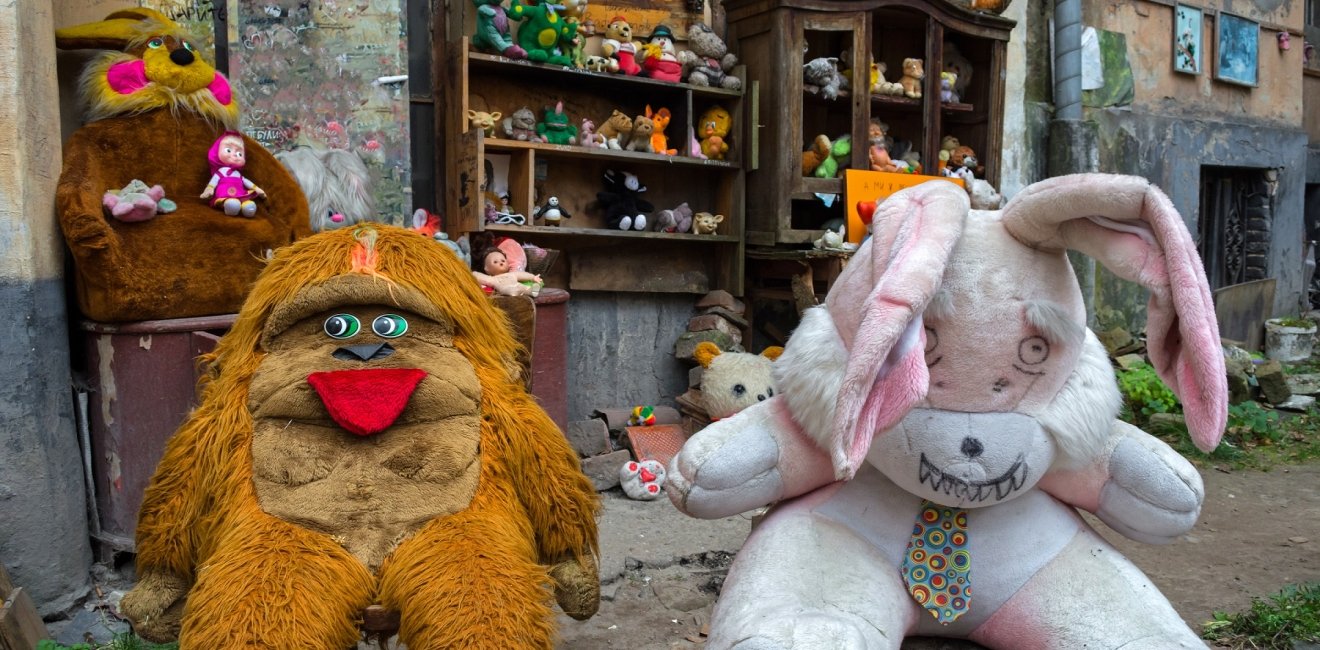
A blog of the Kennan Institute
BY BLAIR A. RUBLE
As Russian tanks streamed across Ukraine’s northern and eastern borders in February and hundreds of thousands of displaced refugees from eastern Ukraine fled west to find shelter, Lviv’s People and Puppets Theater offered up its facilities as a haven from the terror outside. Some company members left to fight; others did whatever they could to aid the war effort from Lviv. Several theater artists began using their sewing skills to make camouflage netting to protect the troops, at times ripping up clothing they had brought from home. Others provided succor to those from the East who were now living in the theater.
Over time, the children on the run began to reveal the deep psychological trauma from their sudden flight. Theater artists started presenting popup puppet shows for the children with an eye toward giving a gift of joy to those in greatest need. The performers would act out tales from Ukrainian folklore, often already well known to the children, and invite the children to join in. For a brief moment, tears would turn to laughter.
Puppetry’s magic has been enlisted in Lviv before to bring delight in times of war. A puppet theater was among the very first cultural institutions to open in 1945 as the Wehrmacht retreated from the city. Even the city’s postwar Soviet occupiers understood the need to add a touch of beauty and delight at a time of unthinkable destruction.
Puppetry has a long history in Lviv, and in Ukraine more generally. Puppetry grew out of the local vertep tradition, the depiction in puppetry of the Christian nativity story and other mystery plays. In this five-hundred-year-old reenactment, Ukrainian puppets with painted faces and held on sticks were manipulated to portray the Nativity story to the accompaniment of Ukrainian song and improvised narration; a similar tradition exists in neighboring Poland and Belarus. The plays often were presented in boxlike stages that were divided between an upper level, the celestial, where the biblical story was presented, and a lower level representing local life.
Over time, the art’s religious meaning began to peel away, leaving a lively secular puppet tradition that embraced both puppets and human enactors. Satirized characters based on national stereotypes, such as a Pole, a Zaporizhzhian Cossack, and a priest, were joined by supernatural characters, such as the Devil and Death, to poke fun at everyday life while reinforcing core religious and social values.
After the Bolshevik Revolution (when Lviv remained part of newly independent Poland), Ukrainian puppetry turned to political purposes. Commissars used puppetry to spread Bolshevik ideology through agit-prop. Distinctive forms of Ukrainian puppetry took shape in the East, especially in Kharkiv. The puppet stage inspired the creators of modern Ukrainian theater.
Soviet authorities detected inappropriate political messages in the puppets’ antics and began to rein them in. By the 1970s, KGB officials in Lviv were arresting actors and audience members for celebrating the Yuletide season through vertep puppetry. Ironically, these efforts emboldened oppositionists to recreate the art form as a forum for underground political commentary. In 1989, for example, a puppet resembling Soviet leader Mikhail Gorbachev took on the role of Herod in a particularly pointed retelling of the Easter story in Lviv.
The local cultural scene came back to life after independence as European tourists with discretionary funds for supporting the arts discovered a previously forgotten Hapsburgian jewel of a cityscape. Perhaps more than its famous opera house, which must have reminded Viennese civil servants of home while they were administering their provincial corner of the vast Austro-Hungarian Empire, puppetry seemed to speak to local hearts while attracting tourists looking for a good time. With independence, the People and Puppets Theater (“I Liudy, I Lialky”) was established and quickly gained an international following. Its success helped turn Lviv into an international puppetry center that embraced touring puppet troupes and has hosted international puppetry festivals since 2015.
Puppetry has flourished in Lviv and elsewhere in Ukraine for five centuries through its ability to reinvent itself and its purpose in response to changing political fortunes. Whether sacral, satirical, political, or commercial, Lviv vertep thrives for its unending ability to delight. For just a moment—as the artists at Lviv’s People and Puppets Theater understand—the magic of puppetry has the power to transport a terrorized child to a safe imaginary world.
The opinions expressed in this article are those solely of the authors and do not reflect the views of the Kennan Institute.
Author

Former Wilson Center Vice President for Programs (2014-2017); Director of the Comparative Urban Studies Program/Urban Sustainability Laboratory (1992-2017); Director of the Kennan Institute for Advanced Russian Studies (1989-2012) and Director of the Program on Global Sustainability and Resilience (2012-2014)

Kennan Institute
After more than 50 years as a vital part of the Wilson Center legacy, the Kennan Institute has become an independent think tank. You can find the current website for the Kennan Institute at kennaninstitute.org. Please look for future announcements about partnership activities between the Wilson Center and the Kennan Institute at Wilson Center Press Room. The Kennan Institute is the premier US center for advanced research on Eurasia and the oldest and largest regional program at the Woodrow Wilson International Center for Scholars. The Kennan Institute is committed to improving American understanding of Russia, Ukraine, Central Asia, the South Caucasus, and the surrounding region through research and exchange. Read more

Explore More in Focus Ukraine
Browse Focus Ukraine
Talking to the Dead to Heal the Living

Ukrainian Issue in Polish Elections


